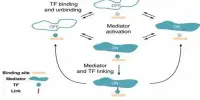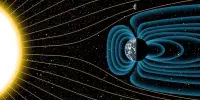Scientists have overcame mathematical hurdles in traditional Spectral Matrix analysis, which is used to evaluate three-component seismic signals, by incorporating time-delay components. The novel technology allows for the characterization of diverse polarized waves as well as the detection of seismic occurrences that were previously undetectable by conventional means. These findings pave the potential for improvements in a wide range of applications, including earthquake detection.
In the Tohoku region’s unique geothermal development setting, minor seismic activity beneath the Earth’s surface presents a fascinating challenge for geologists. While earthquake alarms may occasionally alert us to seismic events, there are numerous smaller quakes that have long piqued the interest of resource engineers who want to identify and understand them.
Tohoku University researchers’ mathematical advances are enhancing the identification of new sorts of seismic waves, including fainter forms, paving the path for more effective earthquake monitoring and risk assessment.
Their findings were reported in IEEE Transactions on Geoscience and Remote Sensing.
We overcame the technical challenges of conventional SPM analysis and expanded it for broader polarization realization by introducing time-delay components.
Yusuke Mukuhira
Seismic data collection is dependent on the quantity and positioning of sensors known as seismometers. Optimizing data extraction from each and every sensor is critical, especially in harsh environments like as Mars or while undertaking long-term monitoring of captured and stored carbon. Polarization analysis, which studies 3-D particle motion, is one viable way to do so. It has gained interest for its capacity to use three-component data, which provides more information than one-component data. This method allows for the detection and identification of a variety of polarized seismic waveforms, including S-waves, P-waves, and others.
Polarization analysis using a spectral matrix (SPM) in particular is a technique used to analyze the way particles move in three dimensions over time and at different frequencies, in other words, in the time-frequency domain. However, in scenarios where the desired signal is weak compared to background noise — known as low signal-to-noise ratio (SNR) events, which are typical in underground reservoirs — SPM analysis faces limitations. Due to mathematical constraints, it can only characterize linear particle motion (meaning the fast-moving, easy-to-detect P-waves), making the analysis of other waveforms (such as the secondary arriving S-waves) challenging.

“We overcame the technical challenges of conventional SPM analysis and expanded it for broader polarization realization by introducing time-delay components,” said Yusuke Mukuhira, an assistant professor at the Institute of Fluid Science of Tohoku University and lead author of the study.
When compared to prior methodologies, his team’s use of time-delay components improved the accuracy of SPM analysis, allowing the characterization of various polarized waves, including S-waves, as well as the detection of low-SNR events with smaller amplitudes.
The study’s primary novelty is the introduction of a new weighting function based on the phase information of the first eigenvector — a special vector that, when multiplied by the matrix, produces a scaled version of the original vector. The weighting function’s objective is to assign different amounts of importance to different parts of signals based on their significance, resulting in fewer false alarms. Synthetic waveform studies revealed that this improvement considerably enhanced the evaluation of seismic wave polarization, which is an important aspect in differentiating signal from noise.
“Technically, we have developed a signal processing technique that improves particle motion analysis in the time and frequency domain,” Mukuhira said.
The researchers tested their methods with real-world data collected at the Groningen gas field in the Netherlands. The results demonstrated enhanced seismic motion detection performance, revealing two low-SNR occurrences that had previously gone undetected by traditional approaches.
These discoveries have the potential for applications in a variety of sectors, including seismology and geophysics, particularly in monitoring subsurface conditions with few observation points. The ramifications include seismic monitoring, planetary exploration, and resource exploitation.
















